Abstract
Immunoglobulin G (IgG) and IgM antibodies against the SL-IV antigen of Mycobacterium tuberculosis in the sera of patients with tuberculosis with negative serology for human immunodeficiency virus (HIV) infection (TB group; n = 97), patients with tuberculosis with positive serology for HIV infection (TB-HIV group; n = 59), and healthy controls (n = 289) were determined by enzyme-linked immunosorbent assay. All sera were obtained at the onset of tuberculosis, i.e., when clinical symptoms appeared. Clinical specimens were collected and cultured for the isolation of M. tuberculosis, and treatment with antituberculous drugs was started. Sera were also obtained from patients in the TB group at fixed intervals during treatment; sera were available from 13 patients in the TB-HIV group before the onset of tuberculosis. The best specificity and positive predictive values were obtained with the IgG assays. In the IgG assays at specificities above 96.0%, the sensitivities of the tests were 45.3 and 72.8% for the TB and TB-HIV groups, respectively, and the sensitivity was 51.9% when data from both groups were combined for analysis. For the TB group, results of this study indicated that the levels of IgG antibodies remain high during treatment. Thus, repetitive serological assays may not be useful for treatment follow-up. In the TB-HIV group, 12 of 13 patients had IgG-specific antibodies against the SL-IV antigen between 1 and 30 months before the onset of tuberculosis, so we suggest that the IgG antibody assay against SL-IV may be helpful for identifying tuberculosis in patients infected with HIV.
Full text
PDF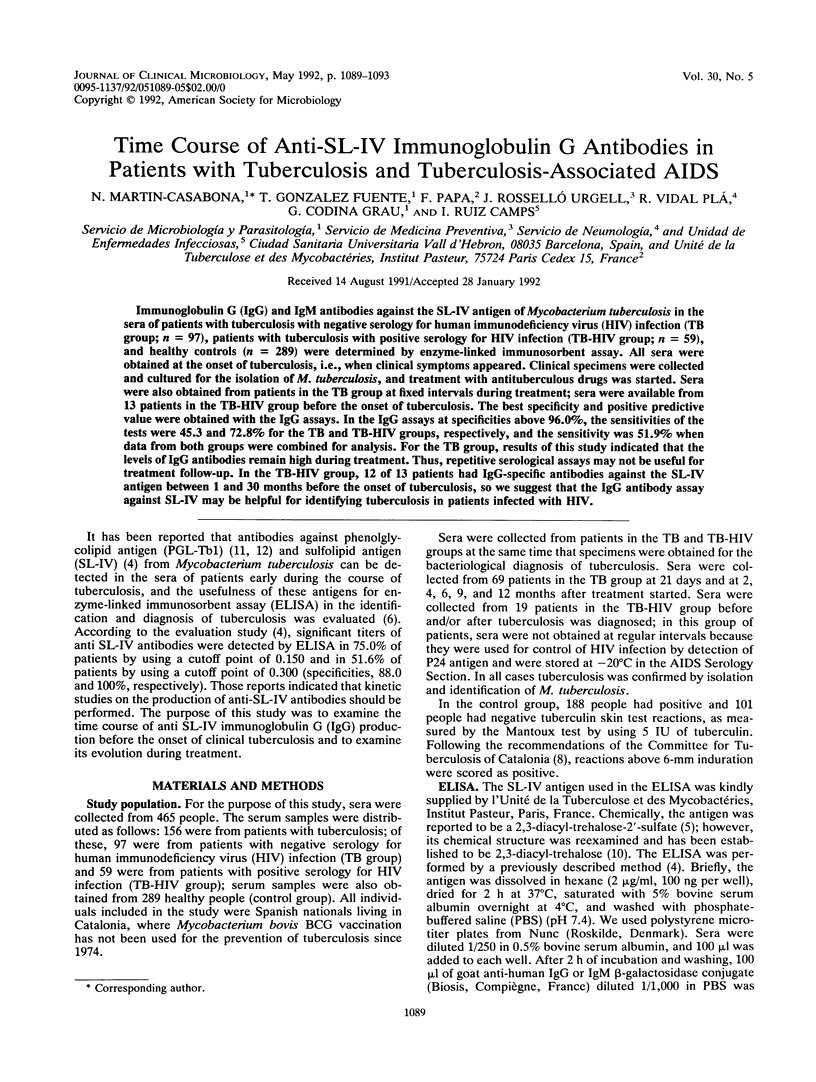
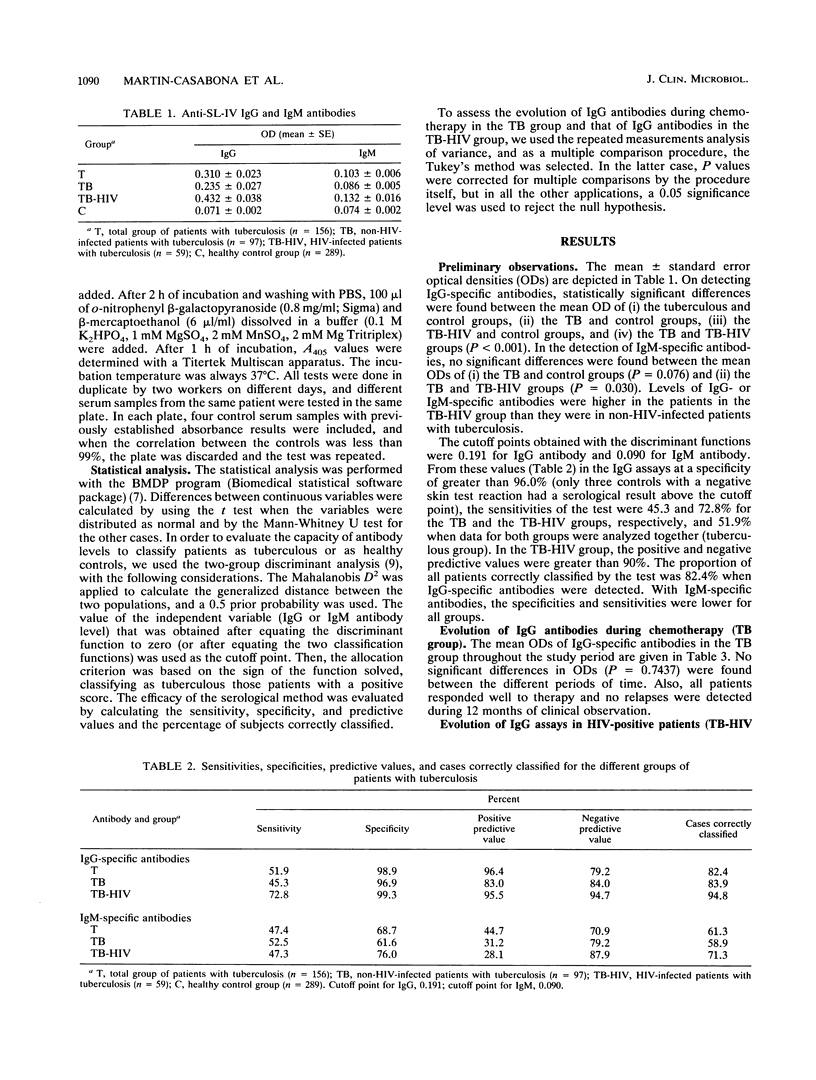
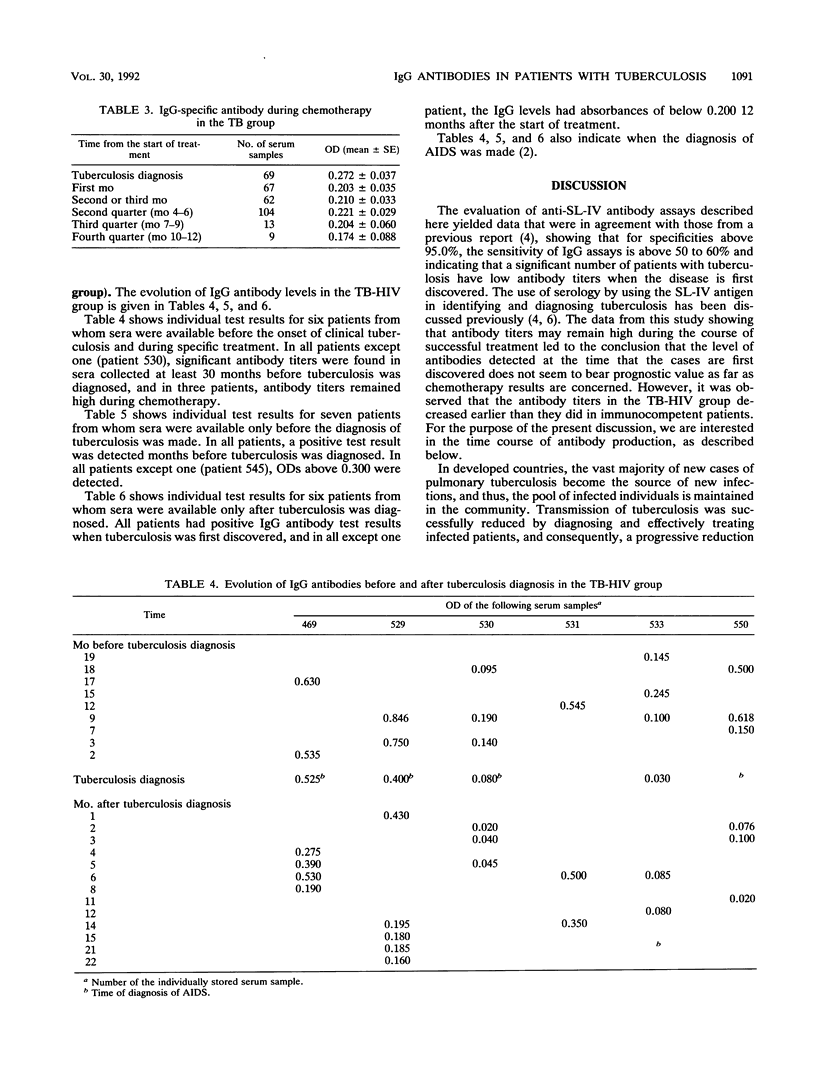
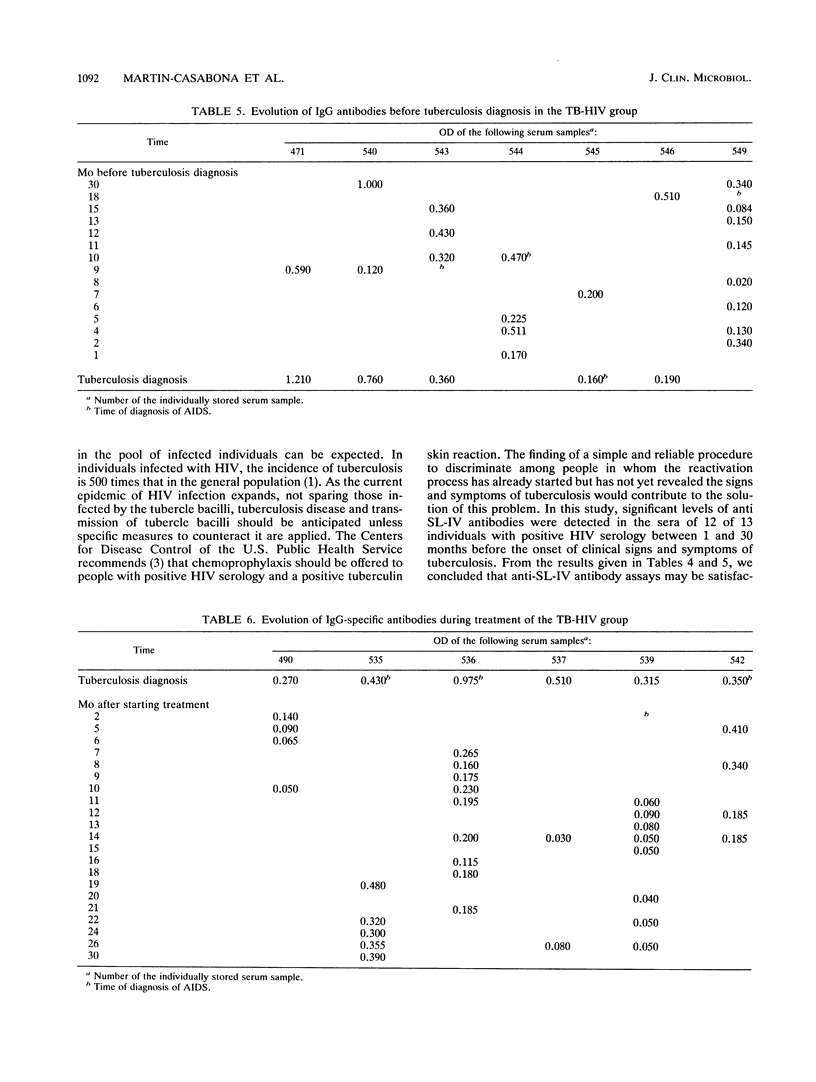
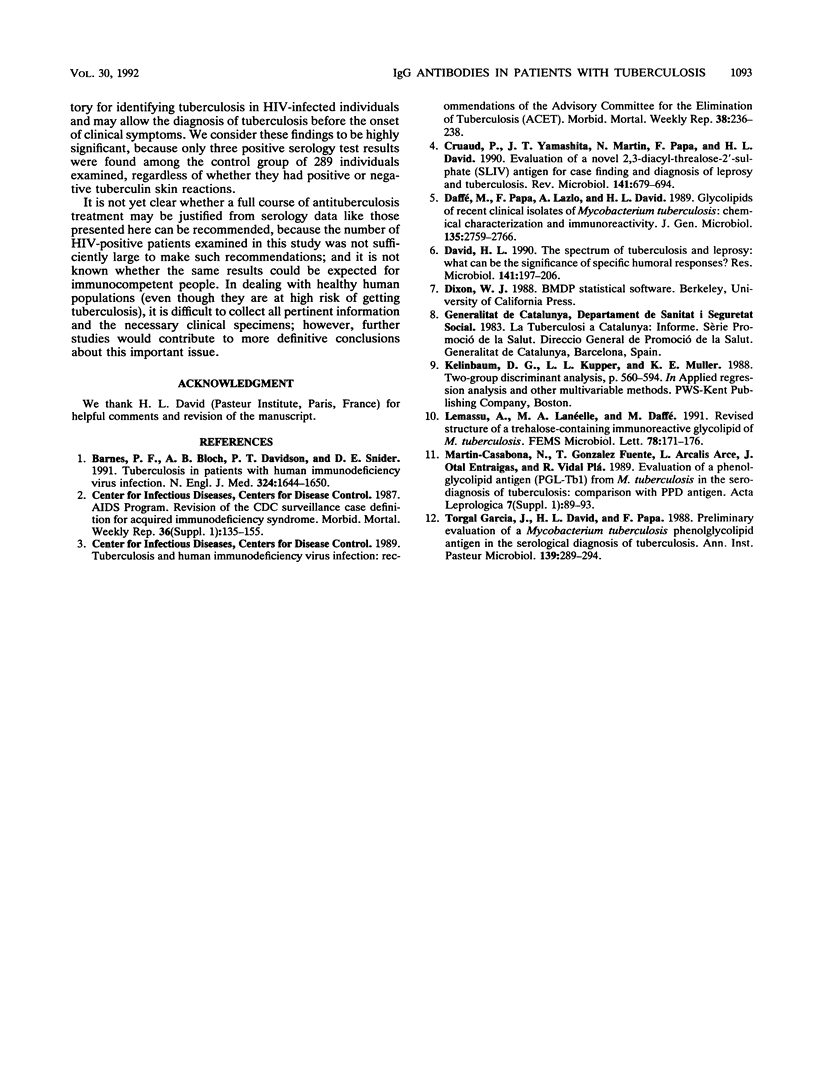
Selected References
These references are in PubMed. This may not be the complete list of references from this article.
- Barnes P. F., Bloch A. B., Davidson P. T., Snider D. E., Jr Tuberculosis in patients with human immunodeficiency virus infection. N Engl J Med. 1991 Jun 6;324(23):1644–1650. doi: 10.1056/NEJM199106063242307. [DOI] [PubMed] [Google Scholar]
- Cruaud P., Yamashita J. T., Casabona N. M., Papa F., David H. L. Evaluation of a novel 2,3-diacyl-trehalose-2'-sulphate (SL-IV) antigen for case finding and diagnosis of leprosy and tuberculosis. Res Microbiol. 1990 Jul-Aug;141(6):679–694. doi: 10.1016/0923-2508(90)90062-u. [DOI] [PubMed] [Google Scholar]
- Daffé M., Papa F., Laszlo A., David H. L. Glycolipids of recent clinical isolates of Mycobacterium tuberculosis: chemical characterization and immunoreactivity. J Gen Microbiol. 1989 Oct;135(10):2759–2766. doi: 10.1099/00221287-135-10-2759. [DOI] [PubMed] [Google Scholar]
- David H. L. The spectrum of tuberculosis and leprosy: what can be the significance of specific humoral responses? Res Microbiol. 1990 Feb;141(2):197–265. doi: 10.1016/0923-2508(90)90031-k. [DOI] [PubMed] [Google Scholar]
- Lemassu A., Lanéelle M. A., Daffé M. Revised structure of a trehalose-containing immunoreactive glycolipid of Mycobacterium tuberculosis. FEMS Microbiol Lett. 1991 Mar 1;62(2-3):171–175. doi: 10.1016/0378-1097(91)90153-2. [DOI] [PubMed] [Google Scholar]
- Martín Casabona N., Gonzalez Fuente T., Arcalis Arce L., Otal Entraigas J., Vidal Pla R. Evaluation of a phenolglycolipid antigen (PGL-Tb 1) from M. tuberculosis in the serodiagnosis of tuberculosis: comparison with PPD antigen. Acta Leprol. 1989;7 (Suppl 1):89–93. [PubMed] [Google Scholar]
- Torgal-Garcia J., David H. L., Papa F. Preliminary evaluation of a Mycobacterium tuberculosis phenolglycolipid antigen in the serologic diagnosis of tuberculosis. Ann Inst Pasteur Microbiol. 1988 May-Jun;139(3):289–294. doi: 10.1016/0769-2609(88)90020-8. [DOI] [PubMed] [Google Scholar]


